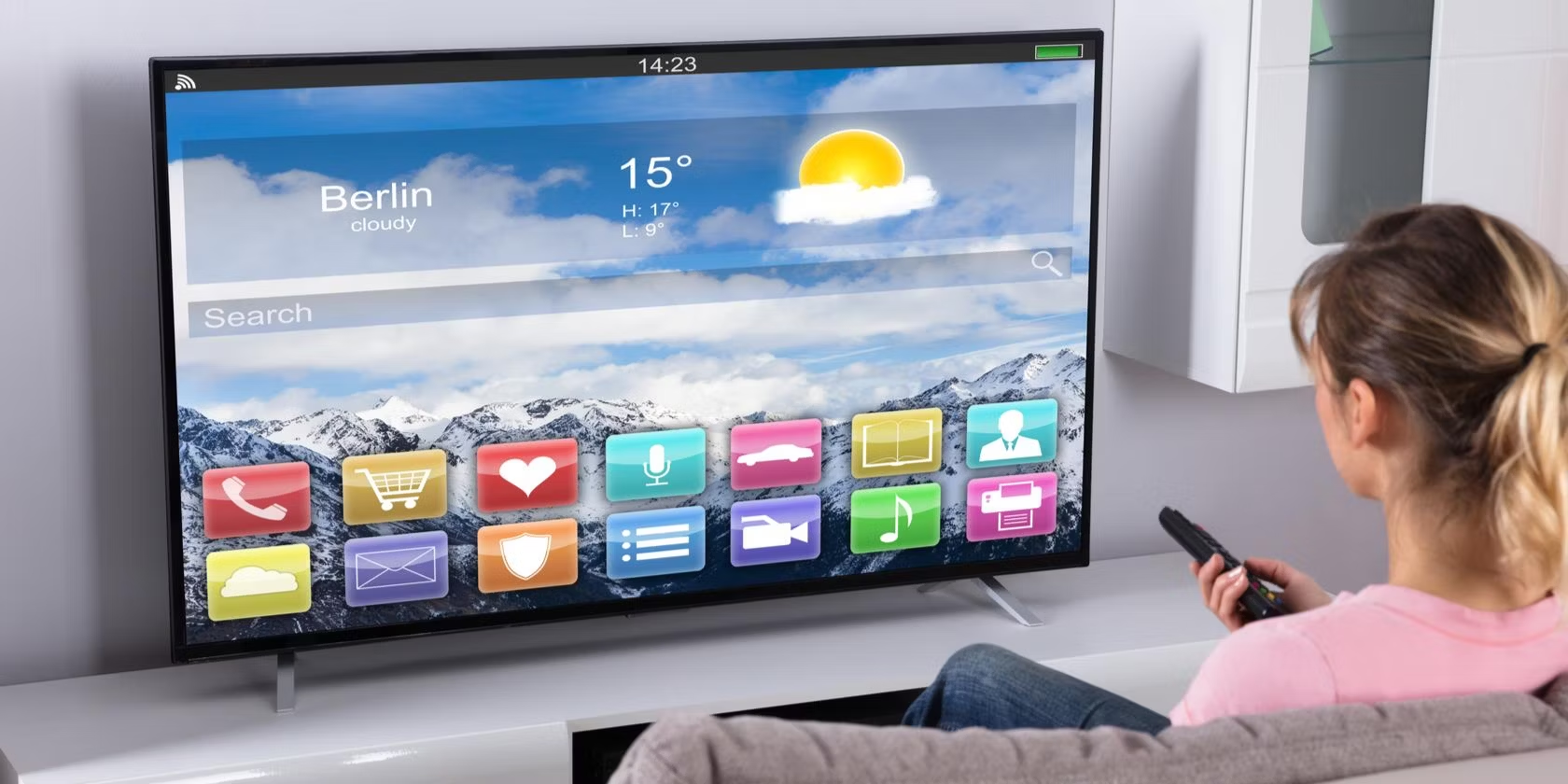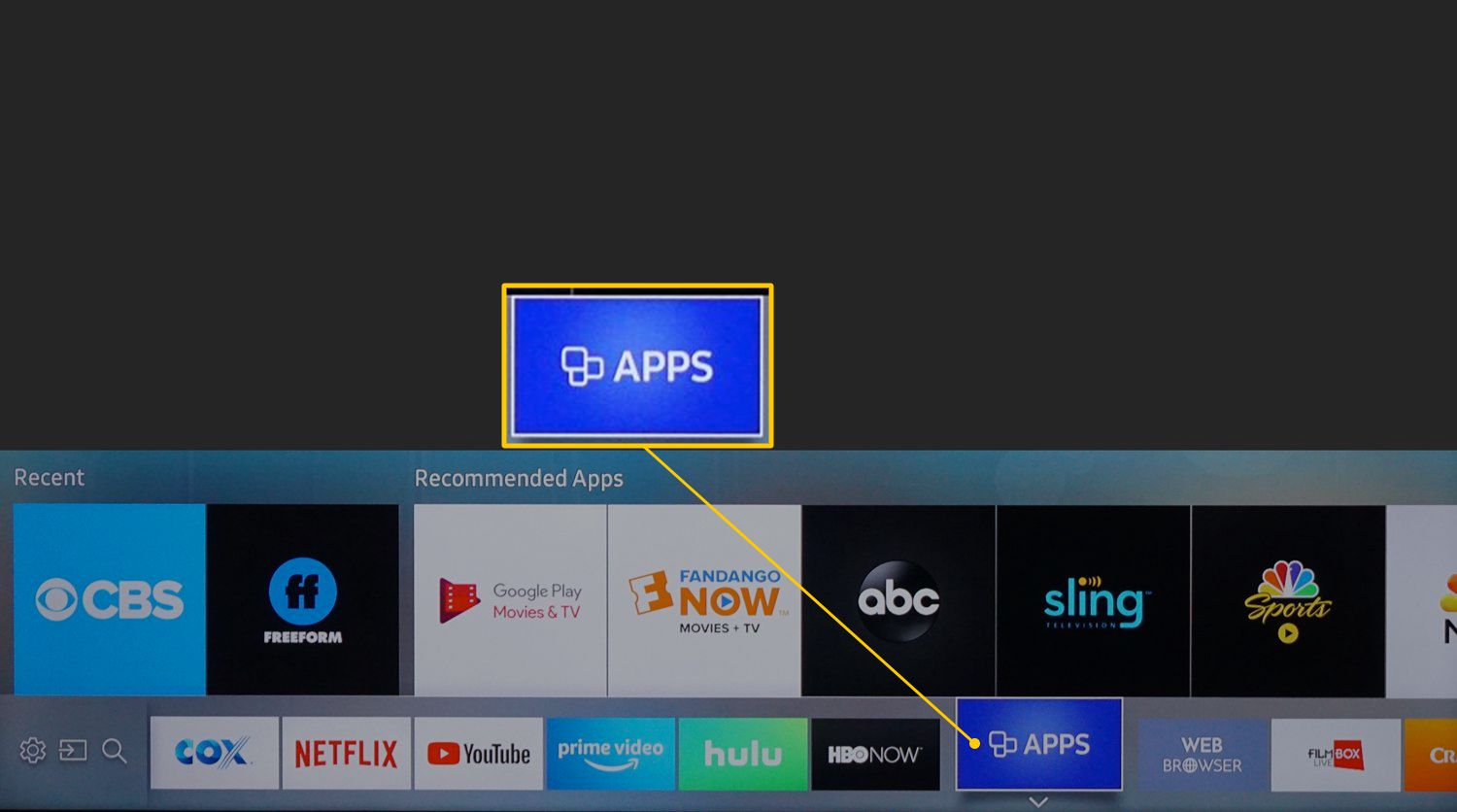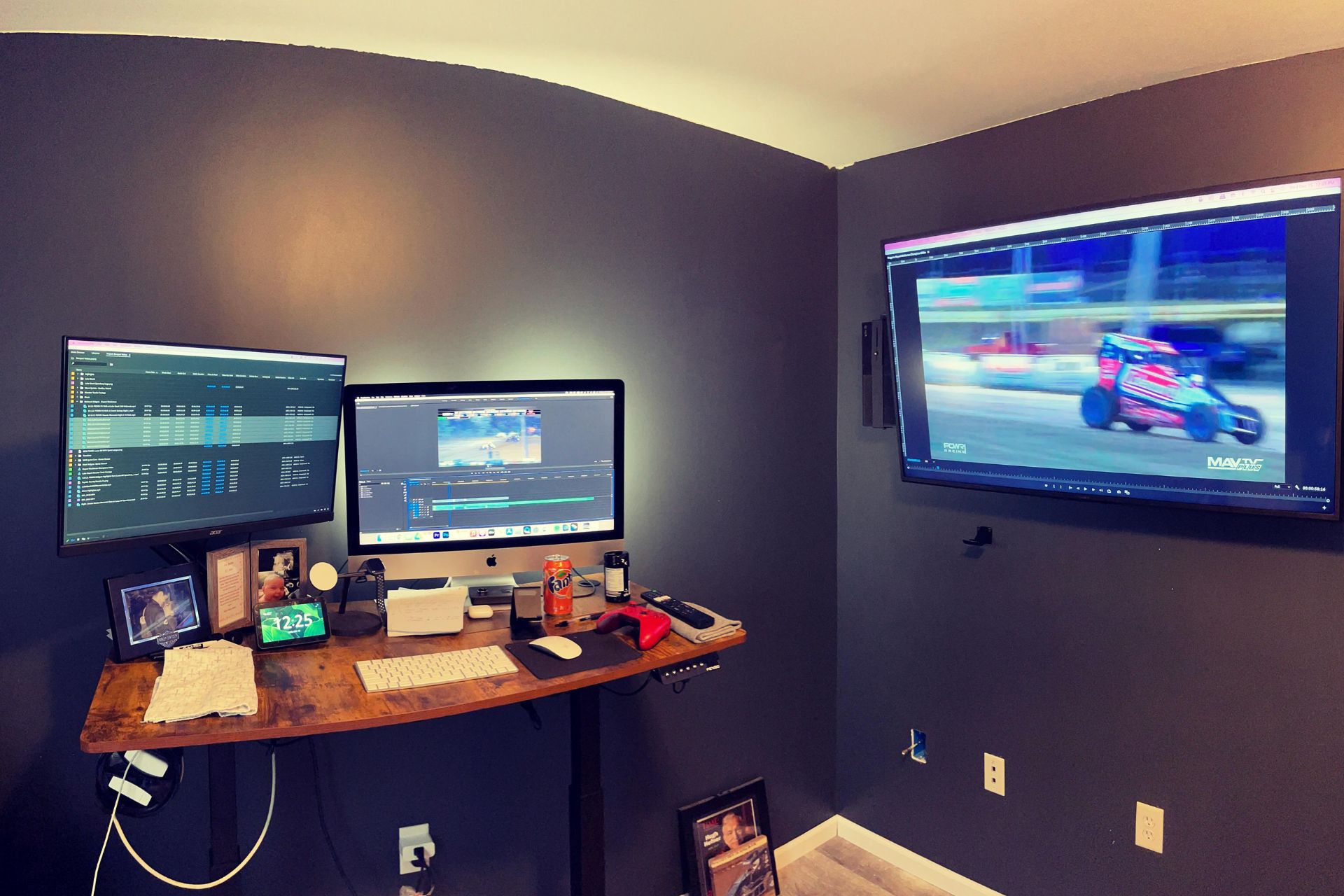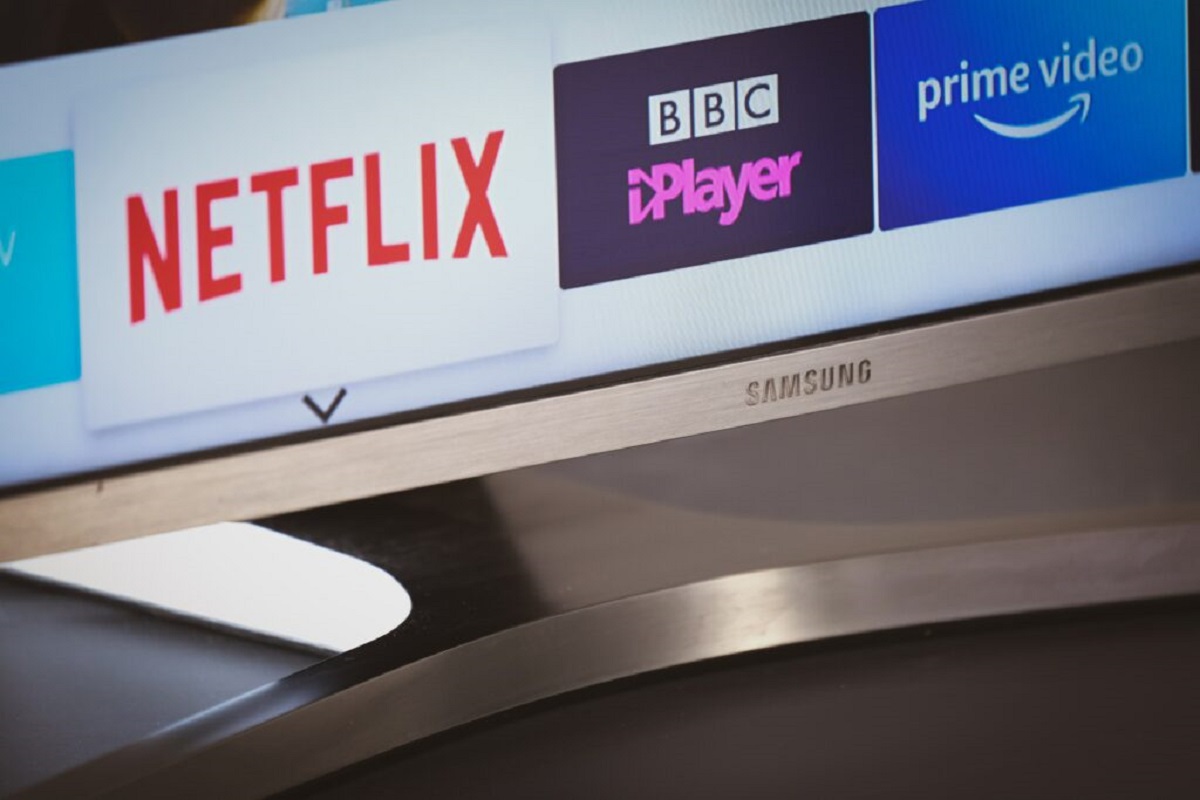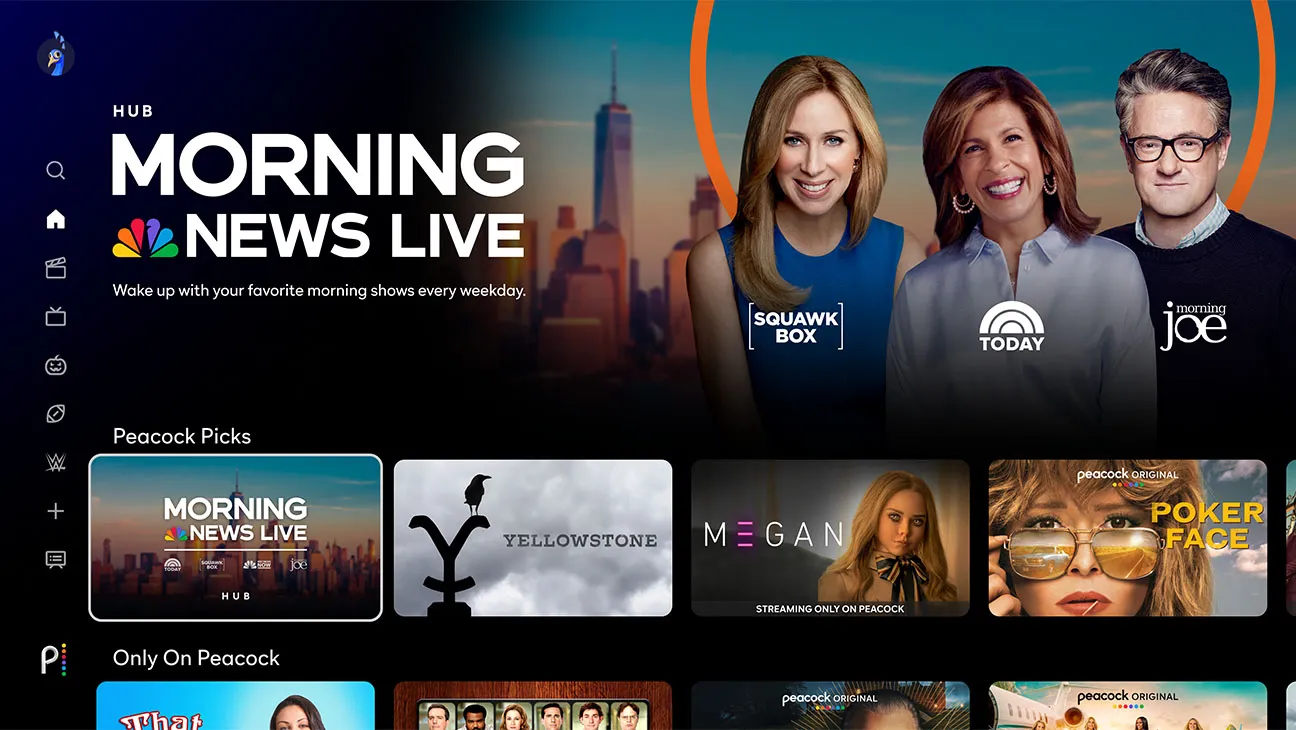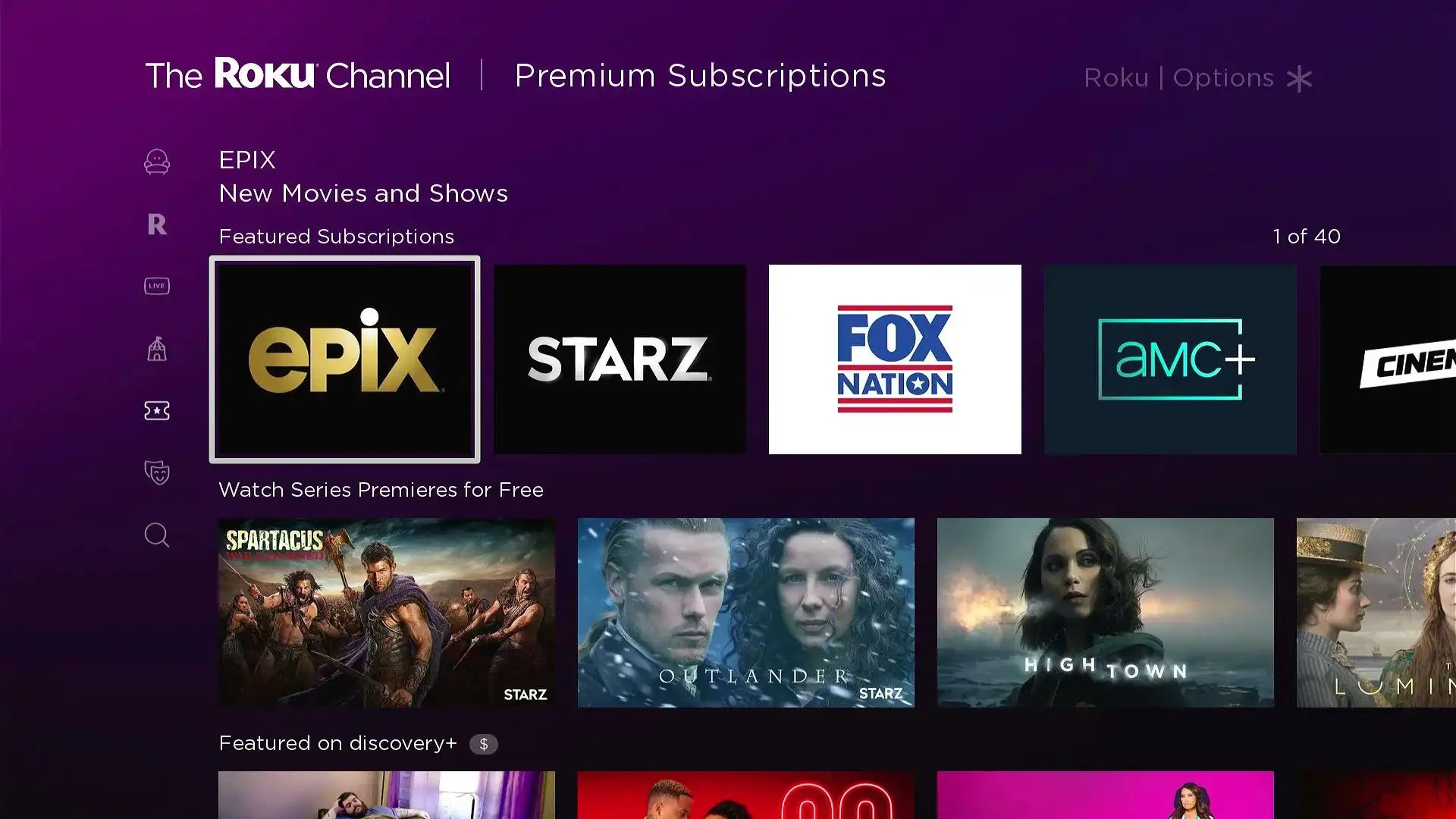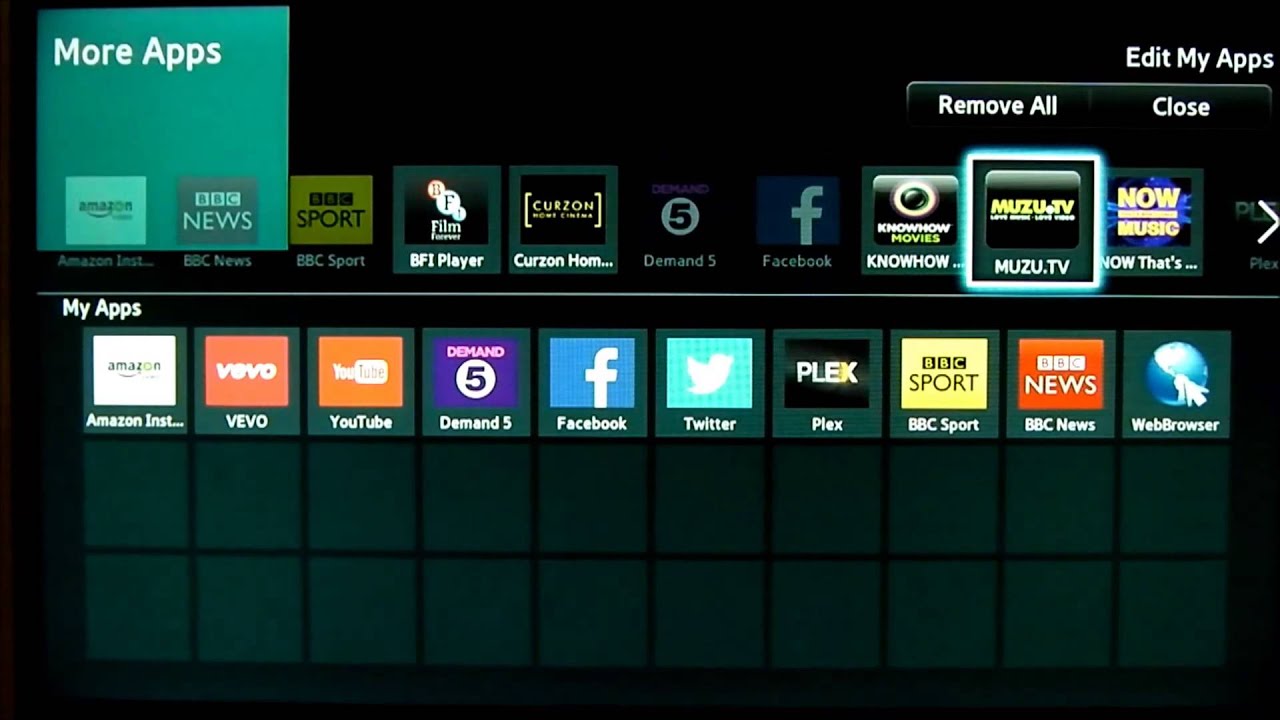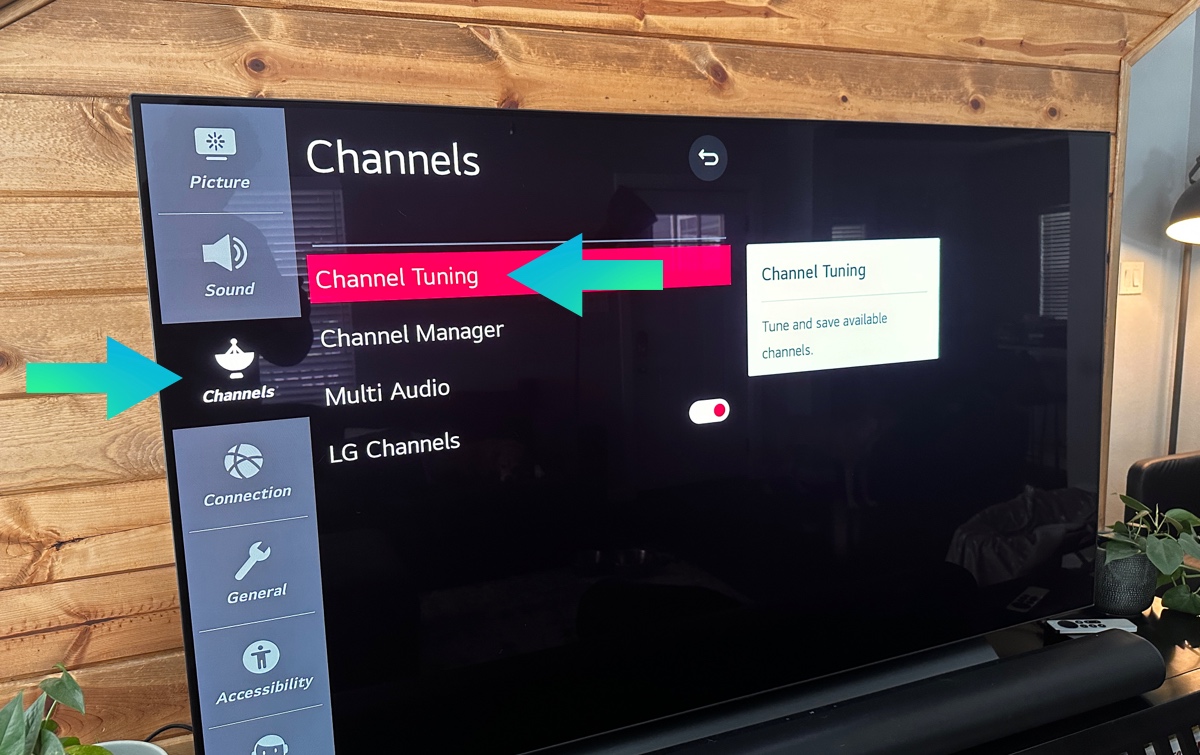Introduction
With the rise of smart TVs, it seems like everyone is rushing to upgrade their old televisions. But what if you’re not interested in all the bells and whistles of a smart TV? Maybe you have a perfectly functional TV that just doesn’t need all the extra features. Or perhaps you’re concerned about the privacy and security issues that come with smart TVs.
Fortunately, there are still plenty of options available for those who don’t want a smart TV. In this article, we’ll explore some alternative options that allow you to enjoy your favorite shows and movies without the need for a smart TV.
Whether you’re looking to stream content, play games, or simply watch DVDs or Blu-rays, there are devices and solutions that cater to your needs. These alternatives not only offer a way to enjoy your entertainment but also provide a more customizable and secure experience.
So if you’re ready to discover the world beyond smart TVs, read on to explore the various options available to you.
Option 1: Streaming Devices
One of the most popular alternatives to a smart TV is a streaming device. These compact devices connect to your TV and enable you to stream content from various online platforms directly to your television.
Streaming devices come in various forms, such as streaming sticks and set-top boxes. Some of the most well-known streaming devices include Amazon Fire TV Stick, Roku Streaming Stick, Google Chromecast, and Apple TV.
These devices not only allow you to stream popular services like Netflix, Hulu, and Amazon Prime Video but also provide access to a wide range of other streaming apps, so you can enjoy a diverse selection of movies, TV shows, and even live sports.
Setting up a streaming device is usually a straightforward process. You connect it to an available HDMI port on your TV, connect it to your home Wi-Fi network, and you’re ready to start streaming. Many of these devices also come with a user-friendly interface, making it easy to navigate and find the content you want to watch.
Streaming devices are an excellent choice if you want a simple and affordable way to access a vast library of entertainment options. They also offer the flexibility of choosing the streaming service that best suits your preferences, as most devices are compatible with multiple platforms.
Additionally, some streaming devices support voice-controlled remote controls or integrate with virtual assistants like Amazon Alexa or Google Assistant, allowing for a hands-free and convenient user experience.
Whether you’re a cord-cutter looking to ditch traditional cable TV or simply want a streamlined way to watch your favorite shows and movies, a streaming device offers a versatile and cost-effective solution.
Option 2: Media Players
If you’re looking for a more versatile and feature-rich alternative to a smart TV, media players are a great option to consider. These devices not only offer streaming capabilities but also allow you to play local media files and access a wide range of online content.
Media players typically come in the form of small boxes or dongles that connect directly to your TV. They can handle various media formats, including video, audio, and images, giving you the flexibility to enjoy your personal media collection as well as online content.
One popular media player is the Nvidia Shield TV, which runs on the Android TV operating system. It allows you to stream content from popular services like Netflix and Hulu, as well as play local media files from external storage devices or network-attached storage (NAS) drives.
Another well-known media player is the Roku Ultra, which provides a user-friendly interface and supports a wide range of streaming services and apps. It also offers a USB port and a microSD card slot, enabling you to expand its storage capabilities or play media files directly.
Some media players, such as the Apple TV, go even further by offering additional features like AirPlay, which allows you to stream content from your iPhone or iPad directly to your TV screen.
One advantage of media players is that they often support more advanced audio and video formats, delivering a superior viewing experience. Some models even support 4K Ultra HD and HDR content, ensuring stunning visuals on compatible TVs.
It’s worth mentioning that media players may require a bit more technical know-how to set up compared to streaming devices. However, once you familiarize yourself with the interface and settings, you’ll have access to a wealth of multimedia possibilities.
If you’re someone who wants the convenience of streaming and the ability to play local media files, a media player is an excellent choice. It combines the benefits of a streaming device with the flexibility to enjoy your own digital content, making it a versatile solution for entertainment enthusiasts.
Option 3: Gaming Consoles
For those who enjoy gaming as well as streaming entertainment, gaming consoles provide a fantastic alternative to smart TVs. These powerful devices not only offer access to a wide range of games but also provide the ability to stream content from popular services.
The two major players in the gaming console market are Sony with their PlayStation consoles and Microsoft with their Xbox consoles. Both consoles have evolved beyond traditional gaming and now offer robust multimedia capabilities.
PlayStation consoles, such as the PlayStation 4 and the newer PlayStation 5, come with built-in streaming apps like Netflix, Hulu, and Disney+. Additionally, you can access the PlayStation Store to download other streaming apps and purchase or rent movies and TV shows.
Xbox consoles, like the Xbox Series X and Xbox One, offer a similar experience. Alongside their extensive library of games, they provide access to popular streaming services and allow you to download additional apps from the Microsoft Store.
One advantage of using gaming consoles as an alternative to smart TVs is the ability to enjoy gaming and streaming on the same device. You only need to switch between apps or inputs to effortlessly transition from playing games to watching your favorite shows or movies.
Gaming consoles also offer advanced graphics capabilities, supporting high-resolution and even 4K gaming and streaming. They often integrate with popular streaming services to provide features like 4K streaming and HDR support, enhancing the visual experience on compatible TVs.
Furthermore, gaming consoles often come with additional features like voice control, allowing you to navigate menus, launch apps, and control playback using voice commands. Some consoles even integrate with virtual assistants like Amazon Alexa and Google Assistant, enabling a hands-free user experience.
However, it’s important to note that gaming consoles tend to be pricier than other alternative options. But if you’re a gaming enthusiast who wants the flexibility of gaming and streaming on one device, investing in a gaming console like a PlayStation or Xbox might be well worth it.
Option 4: HDMI Stick
HDMI sticks, also known as HDMI dongles or HDMI streaming sticks, are another convenient option for transforming your regular TV into a smart TV alternative. These small devices plug directly into the HDMI port of your TV, providing access to a variety of streaming apps and content.
One of the most popular HDMI sticks is the Amazon Fire TV Stick. This device offers a compact and portable solution for streaming content from popular services like Netflix, Prime Video, and Hulu. It also supports voice control through its remote or integration with Alexa-enabled devices.
Another well-known HDMI stick is the Google Chromecast. With Chromecast, you can stream content from your phone, tablet, or computer directly to your TV. It works seamlessly with popular streaming apps and supports 4K Ultra HD and HDR for compatible TVs.
HDMI sticks are incredibly easy to set up. Simply plug the stick into your TV’s HDMI port, connect it to your Wi-Fi network, and you’re ready to start streaming. Their compact size makes them a great option for travel or use in multiple rooms within your home.
In addition to streaming content, HDMI sticks often offer additional features like screen mirroring, allowing you to display the screen of your smartphone, tablet, or laptop on your TV. This makes it convenient for sharing photos, videos, or presentations with friends and family.
While HDMI sticks generally provide a smooth and user-friendly streaming experience, they do have limited storage capacities compared to other devices. This means you may need to rely more on streaming content rather than downloading or storing it locally on the stick.
Overall, HDMI sticks provide an affordable and portable option for enjoying streaming content on your TV. They offer a simple and efficient solution for those who don’t want the complexities or additional features of a smart TV or other streaming devices.
Option 5: External Streaming Devices
In addition to streaming sticks and media players, there are external streaming devices that offer a more robust and feature-rich alternative to smart TVs. These devices connect to your TV and provide access to a wide range of streaming services and apps.
One popular external streaming device is the Nvidia Shield TV Pro. It runs on the Android TV platform and offers 4K HDR streaming capabilities, along with support for Dolby Vision and Dolby Atmos. It also includes a built-in Google Assistant for voice control and integrates with a wide variety of streaming apps.
Another notable device in this category is the TiVo Stream 4K. It not only allows you to stream from popular services but also integrates live TV and DVR functionality, giving you a complete entertainment solution. It runs on the Android TV platform and features voice control through the Google Assistant.
External streaming devices are typically more powerful than streaming sticks, providing smoother performance and more advanced features. They often come with expanded storage options, allowing you to download and store more apps and content directly on the device.
These devices also offer a variety of connectivity options, such as USB ports and Ethernet ports, for additional flexibility and convenience. Some even have built-in HDMI pass-through capabilities, allowing you to connect your cable or satellite box directly to the streaming device for a unified entertainment experience.
One of the advantages of external streaming devices is the ability to customize your streaming experience. You have the freedom to install and configure various apps and add-ons according to your preferences, creating a personalized and tailored entertainment setup.
Furthermore, external streaming devices often receive regular software updates and enhancements, ensuring that you continue to have access to the latest features and improvements. This makes them a great long-term investment for keeping your entertainment setup up-to-date.
While external streaming devices may have a higher price tag compared to other alternatives, their versatility and advanced features make them an attractive option for those who want a more comprehensive streaming and media solution.
Option 6: Set-Top Boxes
If you’re looking for a more traditional alternative to a smart TV, set-top boxes provide a reliable and versatile option. These devices connect to your TV and offer a wide range of entertainment options, including streaming services, live TV, and even gaming.
Set-top boxes are standalone devices that typically come with their own operating system and user interface. They offer a comprehensive entertainment experience by integrating various streaming apps, live TV channels, and on-demand content into a single platform.
One popular set-top box is the Roku Ultra, which provides a seamless streaming experience with support for a wide range of streaming services like Netflix, Hulu, and Amazon Prime Video. It comes with a user-friendly interface, a voice-controlled remote, and the ability to connect wired headphones for private listening.
Another notable set-top box is the TiVo Bolt OTA, which combines OTA (over-the-air) antenna reception with popular streaming services. It allows you to access and record free, over-the-air HD content from local networks while also providing access to streaming apps like Netflix and Hulu.
Set-top boxes often offer additional features like DVR functionality, allowing you to record your favorite shows and movies for later viewing. They may also support 4K Ultra HD and HDR content, ensuring a high-quality visual experience on compatible TVs.
Some set-top boxes, such as the NVIDIA Shield TV Pro, go a step further by offering advanced gaming capabilities. These devices allow you to stream and play games from gaming platforms like GeForce NOW, providing an all-in-one entertainment solution for both streaming and gaming enthusiasts.
Setting up a set-top box is usually straightforward. You connect it to your TV using HDMI, connect it to your home network either via Ethernet or Wi-Fi, and follow the on-screen instructions to complete the setup process. Many set-top boxes also come with dedicated mobile apps that enhance the user experience by offering additional features and remote control functionality.
Overall, set-top boxes offer a comprehensive entertainment solution for those who prefer a more traditional setup. They combine the benefits of streaming services, live TV, and additional features like DVR and gaming, making them a versatile choice for enhancing your TV viewing experience.
Option 7: Digital TV Converters
If you have an older TV that doesn’t have built-in digital capabilities, a digital TV converter is a practical option to consider. These devices allow you to receive and decode digital television signals, allowing you to enjoy high-quality digital content on your non-smart TV.
Digital TV converters are designed to convert the newer digital signals into analog signals that are compatible with older TVs. They typically come in the form of small boxes or dongles that connect to your TV via HDMI or AV cables.
One popular digital TV converter is the Mediasonic HW-150PVR. This converter enables you to watch and record over-the-air digital TV channels in high-definition. It comes with a built-in USB port, allowing you to connect external storage devices for recording your favorite shows.
Another notable option is the IVIEW-3500STBII, which not only converts digital signals for older TVs but also offers additional features such as media playback from USB drives and the ability to connect external hard drives for recording purposes.
Digital TV converters often provide an electronic program guide (EPG) that allows you to easily navigate and schedule the shows you want to watch. Some converters even offer features like pausing, rewinding, and fast-forwarding live TV, giving you more control over your viewing experience.
Setting up a digital TV converter is usually a straightforward process. You connect the converter to your TV, scan for available channels, and follow the on-screen instructions. Keep in mind that you’ll need an antenna to receive over-the-air signals, as digital TV converters rely on these signals for broadcasting.
While digital TV converters do not offer the same level of functionality or streaming capabilities as smart TVs or other devices, they are a cost-effective solution for those who want to continue using their older TVs and access digital content.
It’s important to note that the availability and number of channels you can access with a digital TV converter may vary depending on your location and signal strength. Additionally, the picture quality may not be as sharp or high-definition as what you would experience on a newer smart TV.
Ultimately, if you have an older TV and want to continue using it to access digital content, a digital TV converter provides a simple and budget-friendly option.
Option 8: DVD or Blu-ray Players
In the age of streaming and digital media, DVD and Blu-ray players may seem like old-school options. However, they still offer a viable alternative for entertainment enthusiasts who prefer physical media or have a collection of DVDs or Blu-ray discs.
DVD and Blu-ray players allow you to play movies, TV shows, and other content directly from discs, providing a reliable and high-quality viewing experience. They are compatible with a wide range of disc formats, including DVD, Blu-ray, and even CD discs for music playback.
While DVD players have been around for many years, Blu-ray players offer a more advanced option. They provide superior picture and sound quality, supporting high-definition video and audio formats like Dolby Atmos and DTS:X. This makes them an excellent choice for movie enthusiasts who value exceptional audiovisual experiences.
In addition to playing discs, many DVD and Blu-ray players now offer smart features, transforming them into hybrid devices. These smart players come with built-in Wi-Fi, allowing you to access popular streaming services like Netflix, Hulu, and YouTube directly on your TV.
Some Blu-ray players also offer advanced features such as 4K upscaling, which enhances the visual quality of standard DVDs to near 4K resolution. This means you can enjoy your existing DVD collection with improved clarity on your high-resolution TV.
Setting up a DVD or Blu-ray player is typically straightforward. You connect the player to your TV using HDMI or AV cables, insert the disc into the player, and control the playback using the included remote or on-screen menus.
One advantage of DVD and Blu-ray players is that they provide a physical collection of movies or TV shows that you can display proudly on a shelf. This can be appealing for collectors or those who value having a tangible library of entertainment.
While DVD and Blu-ray players may not offer the same extensive streaming capabilities as smart TVs or other devices, they provide a reliable and straightforward way to enjoy your favorite movies and TV shows. Plus, you have the option to expand your media collection by purchasing discs or borrowing them from libraries or rental services.
If you prefer physical media, enjoy high-quality video and audio, or have a collection of DVDs or Blu-ray discs, a DVD or Blu-ray player is a solid alternative to a smart TV.
Conclusion
Not wanting a smart TV doesn’t mean you have to miss out on the world of digital entertainment. There are plenty of alternative options available that cater to your preferences and needs. From streaming devices and media players to gaming consoles and DVD/Blu-ray players, you can choose the solution that best suits your desired features and budget.
Streaming devices like HDMI sticks and set-top boxes offer a compact and affordable way to access a wide range of streaming services and apps. They provide a user-friendly interface and can easily be connected to your TV for instant access to your favorite content.
For a more versatile entertainment experience, media players and gaming consoles offer additional features like playing local media files and gaming capabilities. These devices provide enhanced graphics and advanced options, allowing you to customize your entertainment setup.
If you prefer a more traditional approach with physical media, DVD and Blu-ray players are still viable options. They offer high-quality playback from discs and some models even incorporate smart features, giving you the best of both worlds.
Ultimately, the choice of alternative options depends on your preferences and requirements. Consider factors such as budget, desired features, and the type of media you prefer to consume when making your decision.
Remember, regardless of the option you choose, all of these alternatives offer a way to enjoy your favorite shows, movies, and games without the need for a smart TV. They provide a range of functionalities, from streaming services and live TV to physical media playback, ensuring you have a satisfying entertainment experience.
So, if you’re looking to bypass the smart TV trend or have privacy and security concerns, explore these alternative options and find the one that best fits your needs. Embrace the flexibility, customization, and high-quality entertainment that these devices bring to your home.







